Correct feeding of winter wheat in spring: fertilizers and their application rates
Grain yield is the most important indicator of Russia's food security. Winter wheat occupies significant acreage. To increase and control yields, it is important to timely apply mineral fertilizers. This is one of the main expenditure items for farms. Meeting the deadlines and the correct dosage of fertilizers can reduce costs, increase the yield and quality of wheat grain.
The content of the article
How wheat is fed
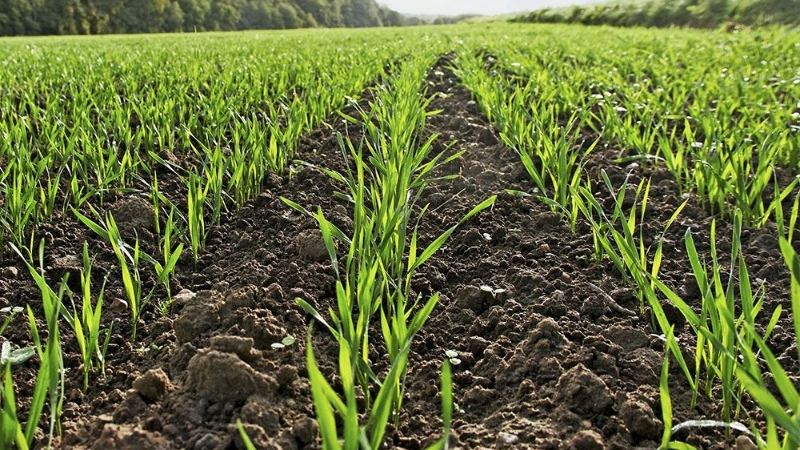
To grow 1 ton of wheat you need:
- 24-35 kg nitrogen;
- 10-15 kg of phosphorus;
- 20-26 kg of potassium;
- 5 kg of calcium and magnesium.
Laboratory analyzes show that the soil does not contain such a quantity of minerals in an assimilable form. There is only one way out - to introduce them artificially. Let's consider the most common fertilizers.
UAN - carbamide-ammonia mixture
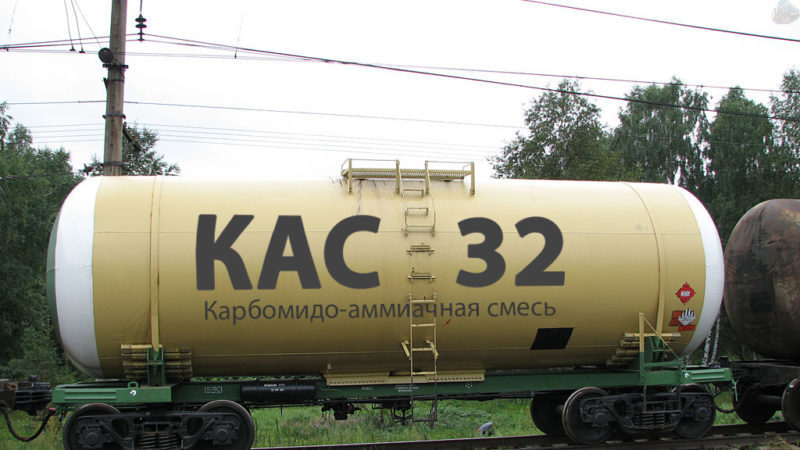
UAN - liquid nitrogen fertilizer prolonged action - used in Russia since the 80s. XX century Consists of an aqueous solution of ammonium nitrate and carbamide in a 1: 1 ratio. There are 3 brands on the market:
- UAN-28 with a mass fraction of nitrogen 28%. Crystallizes at -17 ° C.
- KAS-30 with a nitrogen content of 30%. Crystallizes at -9 ° C.
- UAN-32 - 32% nitrogen. Crystallization at 0 ° C.
In the northern regions and the middle lane, KAS-28 is preferable due to return frosts, in the southern regions - KAS-32.
Prolongation is ensured by the fact that the mixture contains three forms of nitrogen compounds:
- nitrate, which is absorbed immediately;
- ammonium, converting to nitrate;
- amide, which turns into ammonium under the influence of temperature and bacteria.
The gradual transformation of the compounds ensures the duration of the action. The rate of transformation depends on the ambient temperature, since it is determined by the activity of soil bacteria.
Reference. Due to its liquid form, UAN can be used together with biostimulants, sulfur, trace elements, herbicides.
UAN application rates:
- Early spring feeding is done based on the planting density:
- with a plant density of 200-300 pcs. for 1 sq. m fertilizer consumption is 50-80 kg of nitrogen per 1 ha;
- with a density of 300-350 pcs. for 1 sq. m - 40-50 kg of nitrogen per hectare.
- During the booting period - 30-40 kg of nitrogen per 1 ha.
The amount of nitrogen in 100 liters of solution can be calculated based on the KAS brand.
Saltpeter
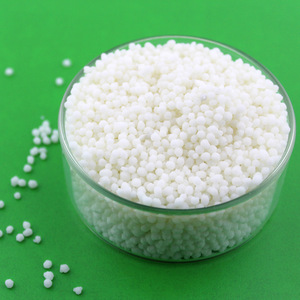
Ammonium nitrate (ammonium nitrate) is a popular fertilizer that contains up to 34% nitrogen and 14% sulfur. It is used in 80% of farms, since the combination of nitrogen with sulfur is a very effective spring fertilizer.
As a rule, this is a dry granular yellowish substance, sometimes produced in the form of a powder with various mineral additives (magnesium, potassium, calcium, etc.).
In spring, the norm for feeding winter wheat with nitrate is 200-300 kg per 1 ha.
"Nutrivant Universal"
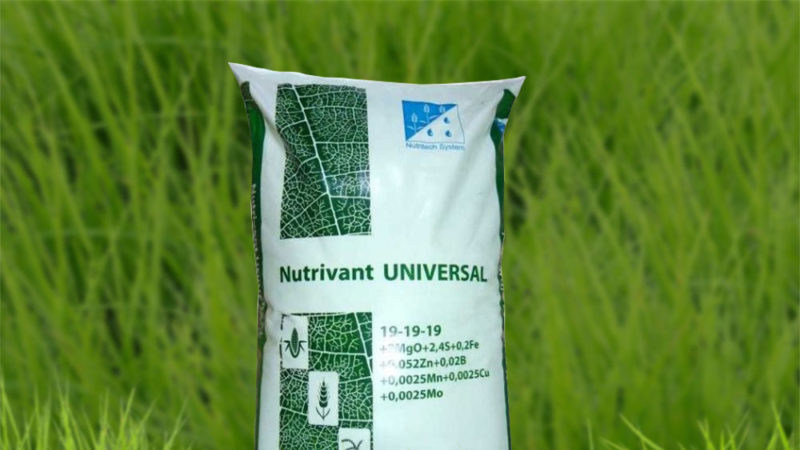
The complex mineral fertilizer contains 19% nitrogen, potassium, phosphorus, as well as additional elements: magnesium, manganese, zinc, copper, iron, molybdenum. It is a liquid concentrated solution. Production - Israel.
The composition is balanced for the full growth and development of plants. When sprayed, the product is fixed on the leaves, is not washed off by rain and is valid for 30 days. Has significant advantages:
- fertilizer is environmentally friendly;
- compatible with any dressing;
- dissolves well in water and is evenly distributed over the leaves;
- increases productivity by 14-16%.
For cereals, fertilizer is mixed with a 5% carbamide solution. In spring, it is applied twice: during tillering and during booting, 2-3 kg or 200-250 liters of working solution per hectare.
Ammonium sulfate
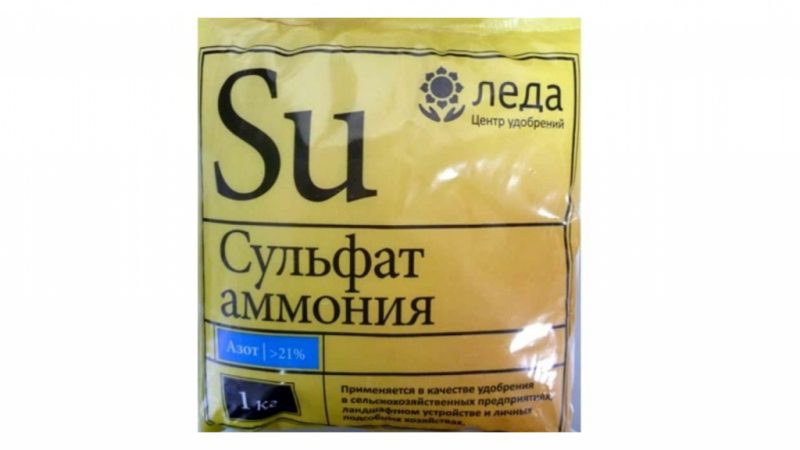
Ammonium sulfate is a popular mineral fertilizer in spring. Contains 21% nitrogen and 24% sulfur. It is a white crystalline free-flowing powder. On acidic soils, they are used together with lime.
Sulfur is an important element involved in the synthesis of proteins, fats and vitamins, that is, it directly affects the quality of grain.
When feeding winter wheat, 280-380 kg are consumed per 1 ha during the resumption of growth and 48 kg per 1 ha at the beginning of earing.
Housing and communal services
The use of liquid complex nitrogen-phosphorus fertilizers is becoming more and more popular:
- they increase yields;
- easily absorbed through leaves and roots;
- eliminate imbalance in plant nutrition;
- prevent the development of fungal infections;
- evenly distributed over the surface;
- can be mixed with aqueous solutions and other fertilizers.
ZhKU is a product obtained by neutralizing phosphoric acid with ammonia. It is a gray or greenish solution. It contains 11% nitrogen and 37% phosphorus.
In the conditions of a prolonged and cold spring, HCS make it possible to quickly eliminate the nutritional deficit of wheat by foliar feeding. The procedure is carried out twice a season.
The concentrated fertilizer is diluted with water in a ratio of 1: 2 and used in an amount of 100-150 liters per hectare of working solution in the tillering phase. When entering the tube, the feeding is reduced by 1.5-2 times.
Winter wheat yield increases by 9-14%
Read also:
Top dressing of winter wheat
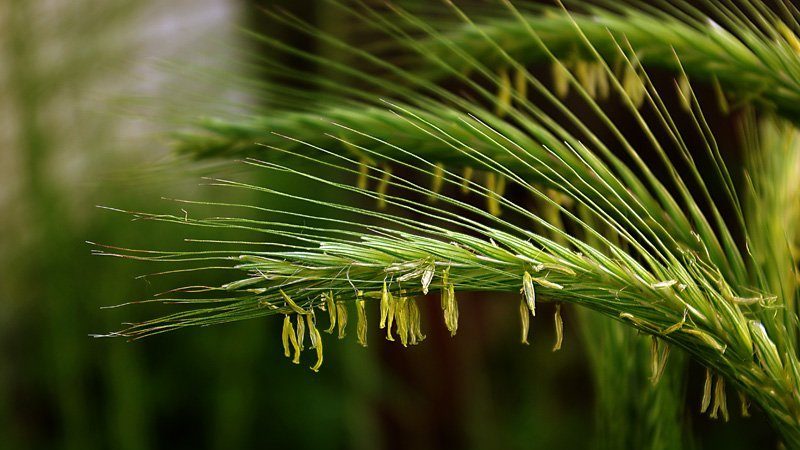
The plan for spring feeding of wheat with nitrogen fertilizers is based on an agrochemical analysis of soils and the state of plants after wintering.
Many people prefer cheaper ammonium nitrate.
Farms that rely on modern intensive wheat varieties choose complex fertilizers in order to fully provide the plants with all microelements.
It is advisable to feed winter wheat in two stages.
In early spring
Early spring feeding allows you to form the number of plants for a good harvest, ensure friendly tillering, high-quality and timely renewal of the growing season.
It is advisable to use fertilizers containing the nitrate form of nitrogen for the rapid entry of wheat into the growth phase.
The first top dressing is applied from 35 to 75 kg of nitrogen per 1 ha of crops. This ensures growth and friendly tillering of seedlings.
At the beginning of earing
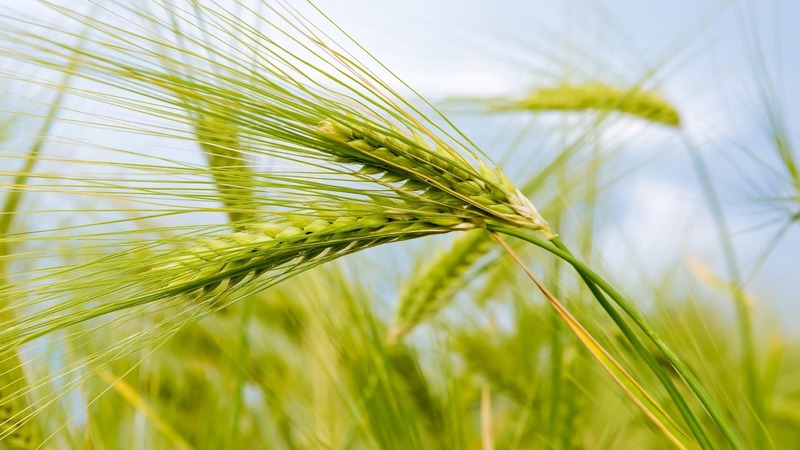
The introduction of nitrogen fertilizers during the period of the beginning of the exit into the tube allows you to influence the number of grains in the ear.
UAN, ammonium nitrate, ammonium sulfate are suitable for feeding. Norms - from 20-45 kg of nitrogen per 1 ha.
When applying fertilizers, it is important:
- correctly calculate the rate based on the active substance;
- take into account the weather - during rains, a significant part of nitrogen is washed off into the deep layers of the soil
- the state of the crops - if the seedlings are bright green, dense, the application rate is reduced by a third.
For even distribution of fertilizing over the field, it is necessary to prepare and calibrate the equipment.
Fertilization technology
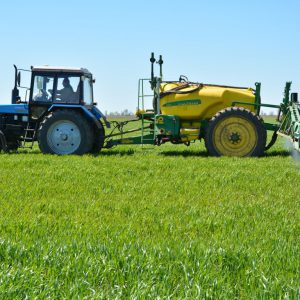
For fertilizing fields with winter wheat use attachments attached to a tractor or car.
Root dressing
Solid fertilizers are applied using seeders of the RTT-4, 2A, 1-RMG-4 brands. Fertilizers are delivered to seeders by semi-trailers, trailers or in car bodies. Liquid fertilizers are applied using RZhU-3.6, RZhT-8 sprayers.
Attention! The use of aviation is ineffective and harmful to the environment.
For the preparation of liquid fertilizers on farms, you can purchase mortar units - stationary and mobile mixers that are produced for these purposes.
Conclusion
Correct and timely feeding of winter wheat in spring ensures high and stable grain yields. The quality of the grain improves, the gluten content rises, the plants quickly resume growth and make optimal use of soil moisture.
The timing of top dressing is, as a rule, very short, therefore, all available mechanized fertilizers must be used.